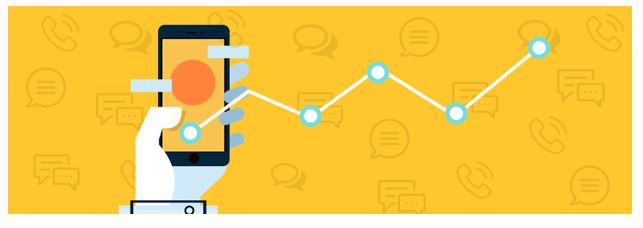
On paper, given billions of handset owners worldwide have access to a wide range of applications in the App Store and Google Play, the mobile app industry is more competitive than ever.
With millions of users, both autonomous and institutional, seeking to hit smartphone gold with their latest update, these unprecedented figures imbue the market with a “gold rush” atmosphere.
But if you look closely, you’ll find that not everyone glitters in the realm of smartphones.
One of the significant challenges in this sector has been the lack of interest by mobile users.
An eye-opening survey on app use was released by Emarketer, stating that only about 30 percent of mobile apps open an app on the same day they downloaded it.
And only 3.3% of Android applications and 3.2% of iOS apps still have daily members after 30 days.
A silver lining is also by the report: applications that users developed sustainably (instead of being affected by paying advertisements) were 156% more likely to lead in continued use.
This single term, “organic,” tells us what sustainable benefit and maximum user interface smartphone users want.
Here’s how to craft a high-converting smartphone app like this.
-
Contents
If the mobile world shifts, so do the KPIs that make smartphones a success, too. At first, advertisers in the App Store or Google Play concentrated solely on landing-page click-through levels.
That does little to quantify use. Builds become the main predictor of success, but that informs you nothing about actual interaction with the App Developer Dubai app.
That’s what you’re going to hear about how to build a high-converting smartphone device.
And by gazing at a few key metrics, such as consumer engagement (social media shares, favorable user feedback, etc.), audience analysis (direct contact with the user through the app), and customer satisfaction, you can assess the success of your business model.
-
Tie your in-app activities to your company priorities
Any useful guide to creating a stellar marketing strategy would require a preliminary step to set explicitly specified targets and evaluate the performance measures to meet those targets.
Suggest you own a cafe, and you want all new and current clients to be involved.
If you have a robust mobile phone app that fits in combination with a fantastic mobile-friendly platform, then you have several opportunities for engaging users.
You can give those consumers coupons and discounts and new ones with a heavy social media effect.
The argument is that any small company can apply these techniques through their software to monitor the customer’s actions.
You now have all the resources needed to better analyze the target demographic with this bit of new info.
The phase then is to refine this operation after setup.
-
Optimize the tasks after installation
You would want to evaluate your marketing activities’ fruits, much as with every other site in the digital world.
It implies optimizing the post-install activities of your app to figure out precisely which sources succeed and underachieve.
When ascribing each install to the accompanying marketing strategy, a successful mobile attribution approach tests provide skills.
Besides, after setup, it enables you to monitor user behavior and calculate real interaction over time.
-
Deep-link to the promotions for smartphone applications
The glaring contrast is that the world of mobile does not have hyperlinks.
Except this mobile medium focuses on “deep links,” and as efficient recruitment and management reports channel, professionals make persuasive cases for this relation.
They are powerful because they cross the distance between smartphone applications, email, and portals.
Deep linking enables users to access a Dubai App Developer smartphone app from a regular website.
However, this has not always been the case, as any customer who got an email requesting a password when their app is still open understands.
The method behind deep connectivity is dynamic and includes routing web browsers to individual open applications to HTTP URLs and mobile devices.
But for a change, leave the technological jargon and recognize the advantages: advertisers can connect their digital platforms directly to a smartphone app.
Tell that upon downloading its ios app, the department store gives a free discount.
Now the software will fire up and connect the user straight to the web deal that drew them in the first place through deep-linking, right after download, removing pain points and moving them down the sales pipeline to become a paying client with the app eventually.
Contact me for professional services!

